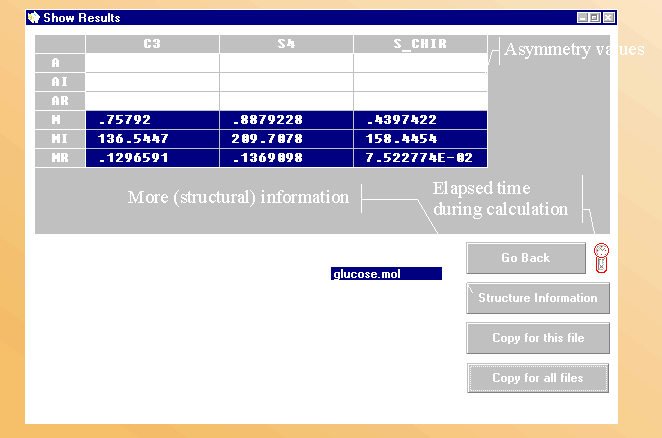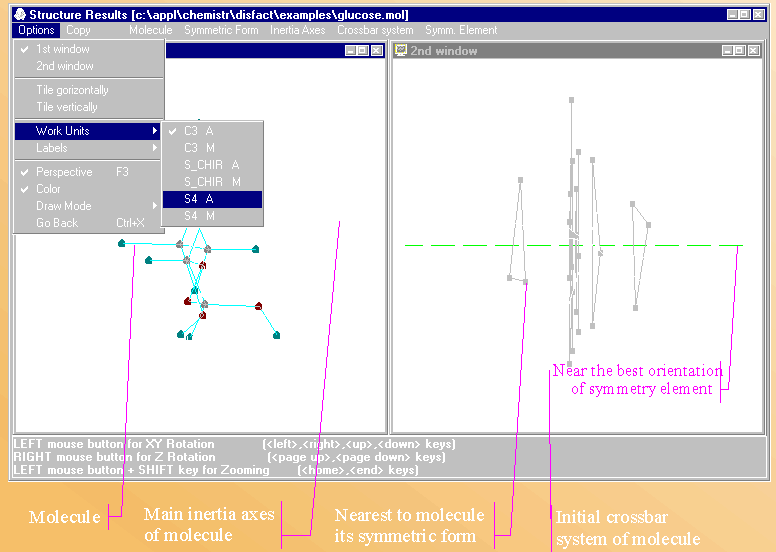
The DisFact
The Distortion Factor system
The tool for analysis of chirality and specific asymmetry degree of point structures
DisFact system is an unique instrument for structural research. It allows to get quantitative evaluation of asymmetry and chirality of molecules of any structural types. The specified information can be useful at the solving of various structure - property tasks as well as in education:


The free cut version is available as follows:
(self-extractor of installation files, for x86 and WIN32s
or WIN32, ~ 850Kb) - disfact.exe
or disfact.exe.
It incudes all functions of whole DisFact system but can calculate structures
with 12 points (atoms) maximum. The on-line Help (by pressing F1 key) is
designed for covering most of your questions.
For orders, please e-mail to [email protected]
Copyright © by: Theoretical Chemistry Team of A. V. Bogatsky Physical-Chemical Institute of the National Academy of Science of Ukraine
Technicality
The entrance information:
a) spatial structure of molecules as files of several popular
formats;
b) list of symmetry elements (in range C2-C20 and S1-S20)
and/or overall chirality symbol ('EDF') and other adjust parameters for
calculation.
The target information:
a) quantitative evaluation of molecular chirality and/or
asymmetry;
b) image of molecule and of best found orientation of symmetry
element, and, additionally, of molecule's main inertia axes and initial
crossbar system.
DisFact system realizes the folding-unfolding, the optimized Dissymmetry Function (Asymmetry Function), and the "EDF" (Enantiomer Dissimilarity Factor) methods.
References
"folding-unfolding" method:
Zabrodsky, H.; Peleg, S.; Avnir, D. Continuous Symmetry Measures.
J. Am. Chem. Soc. 1992, 114, 7843-7851;
Alikhanidi, S. E.; Kuzímin, V. E. An Optimization of Asymmetry
Evaluation of Molecules within the Bounds of Folding-Unfolding Method.
J. Mol. Model. 1999, 5, 116-124;
Dissymmetry Function method:
Kuz'min, V. E.; Stel'makh, I. B.; Bekker, M. B.; Pozigun
D. V. Quantitative Aspects of Chirality. I. Dissymmetry Function. J.
Phys. Org. Chem. 1992, 5, 295-298.
Asymmetry Function method:
Alikhanid, S. E.; Kuz'min, V. E. An Optimization of Quantitative
Asymmetry Evaluation of Molecules within the Bounds of Dissymmetry Function
Method. Zh. Struct. Khim.., in press.
EDF method:
Alikhanidi, S. E.; Kuz'min, V. E. Quantitative Evaluation
of Molecular Chirality on Base of an Optimized Approach to Original and
Reflected Structures Comparison. Reports of NAS of Ukraine, 1999,
3, 138-141.